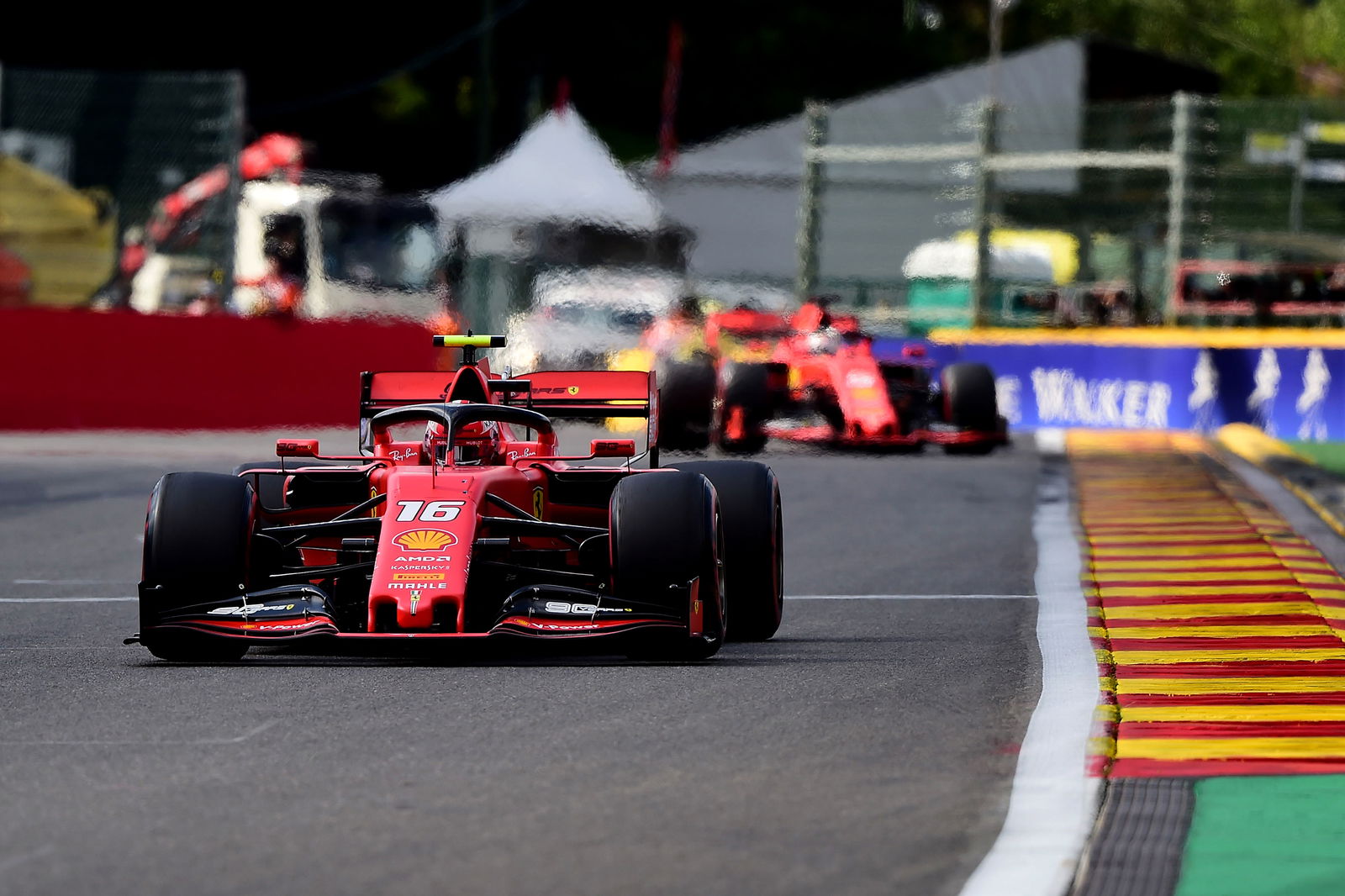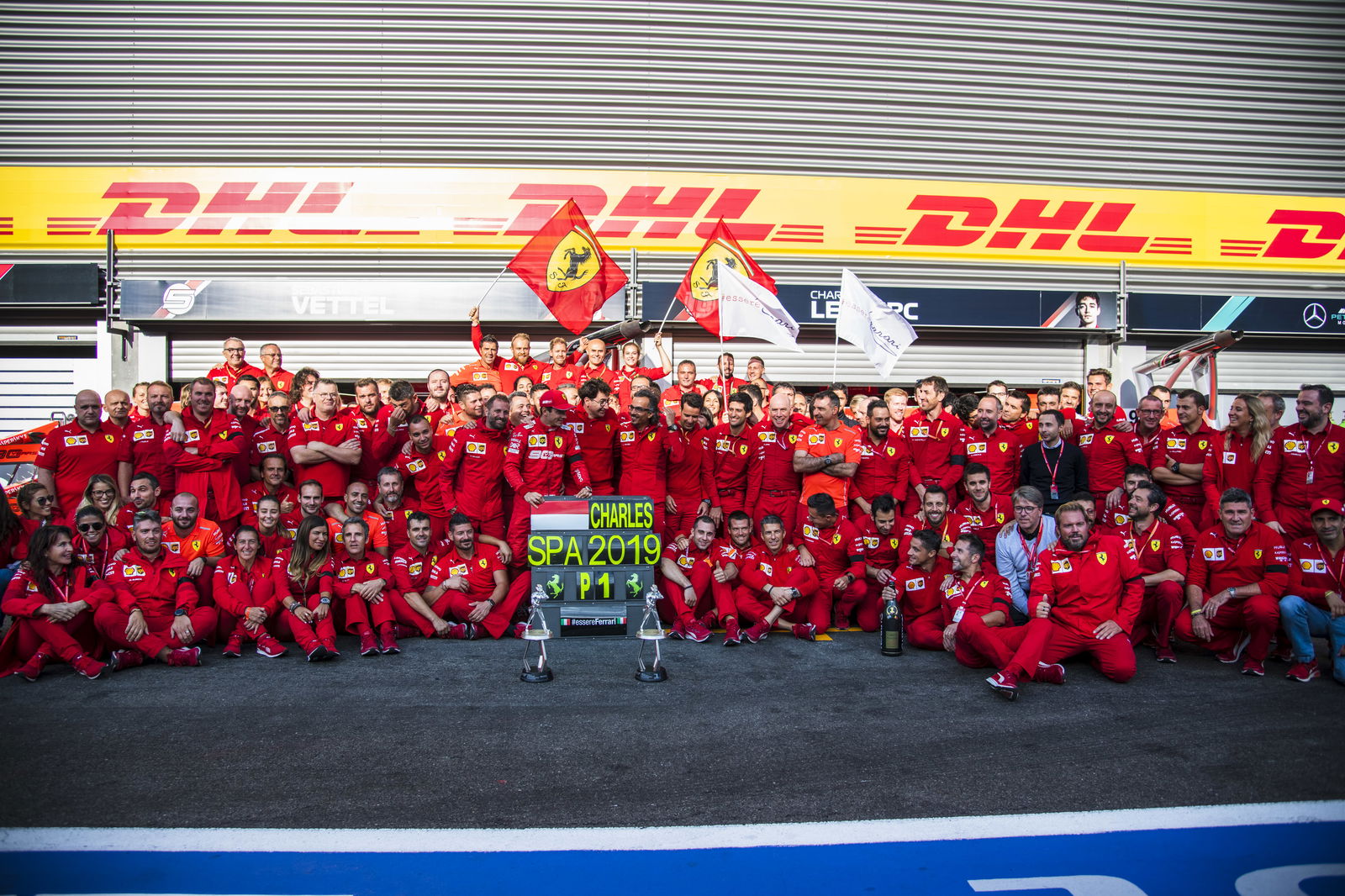F1 Race Analysis: How Ferrari’s split strategies paid off at Spa
So cynical has the Formula 1 community become that even as Ferrari ran one-two with a clear straight-line speed advantage over Mercedes nearing the pit stop window in Sunday’s Belgian Grand Prix, most were left wondering how it would throw the win away.
But Ferrari saw it through this time – just – and ended its win drought dating back to last year’s United States Grand Prix, in part thanks to its decision to run split strategies with Charles Leclerc and Sebastian Vettel at Spa on Sunday.

So cynical has the Formula 1 community become that even as Ferrari ran one-two with a clear straight-line speed advantage over Mercedes nearing the pit stop window in Sunday’s Belgian Grand Prix, most were left wondering how it would throw the win away.
But Ferrari saw it through this time – just – and ended its win drought dating back to last year’s United States Grand Prix, in part thanks to its decision to run split strategies with Charles Leclerc and Sebastian Vettel at Spa on Sunday.
Concerns about its long-run pace from FP2 on Friday prompted Ferrari to make some minor setup changes, something Leclerc highlighted after the race. Even with such a huge straight-line speed advantage that helped Leclerc take pole by seven-tenths of a second in qualifying, the heavier-fuelled cars would negate some of that in the race, allowing Mercedes to claw more time back through the middle sector.
Alas, the might of the Ferrari engine was clear from the outset at Spa. A scruffy start caused Vettel to lose a position to Lewis Hamilton exiting La Source, but he sailed back into second place on the Kemmel Straight. Leclerc had already shot off into the distance, and even with a brief Safety Car period giving Hamilton and Mercedes teammate Valtteri Bottas a second chance to disrupt things at the front, the Ferraris held firm.
But as seen on Friday, Vettel was not as comfortable with the setup of the car as Leclerc. While his teammate opened up a two-second buffer at the front of the pack, Vettel was left to contend with Hamilton behind, the Mercedes driver drawing to within a second around Lap 5. Hamilton quickly reported to the Mercedes pit wall that Vettel seemed to be struggling, giving him hope of jumping ahead.
Ferrari kept Vettel going as the pit window opened, but then sought to cover off Hamilton before Mercedes had the chance to blink first. The decision was taken to call Vettel into the pits for a set of Medium tyres that should have seen him to the end of the race on Lap 15. “We had to react to what Mercedes was doing at that time,” team principal Mattia Binotto said after the race. “If we could have gone longer with Seb, we were prepared to go as long as possible, but as soon as we saw Mercedes ready for the pit, we had to react.”
Hamilton’s tyres remained in fairly good nick, though, giving Mercedes the confidence to keep him out, its sights set on Leclerc and not Vettel. Hamilton was able to make some gentle inroads on Leclerc through the final stages of his stint, but still trailed by 4.2 seconds by the time Ferrari made the call to bring its race leader in.
The six-lap window between Vettel and Leclerc’s stops left Ferrari facing a prospect familiar from the early part of the year: the need to swap its drivers on-track. Vettel’s pace on fresh Mediums had been good enough to give him the undercut on Leclerc, who emerged from the pits some five seconds down on his teammate (an eight-second swing in total).
The gap concerned Leclerc initially. “When I came out behind Sebastian, first of all I was not completely confident that the degradation was that much on the Medium that I could actually catch him,” he explained after the race. “But after two or three laps, I think there was quite a big delta pace, then I was like OK, I don’t think we will lose time together which is exactly what we didn’t do.”

Leclerc wiped away the five-second gap in the space of just five laps, such was the advantage of his fresher tyres. Ferrari did not even consider holding station, quickly giving Vettel the call to allow his much faster teammate through. “They were on a different strategy, and early on we thought we were losing time and that would not be the best thing for the team on that occasion,” said Binotto.
Leclerc added: “It was pointless for us to fight in a situation like this. It would only be lost time for nothing, and we knew that Lewis was coming, so it was pretty clear in the car that something would happen.”
Lewis was indeed coming, reacting to Leclerc’s stop at the end of Lap 21 by coming in himself one lap later. A second lost in his stop combined with the tyre advantage Leclerc had on his outlap meant the gap stood at seven seconds, surprising Hamilton, who asked why he was not brought in earlier to try and reduce the margin.
The real cost of that decision not to come in earlier only became clear in the final few stages of the race. Leclerc was waved past Vettel, who in turn made life difficult for Hamilton thanks to Ferrari’s straight-line speed advantage, costing the Mercedes driver around 2.5 seconds. Ferrari ultimately had no decision but to bring Vettel in for a second stop, his Medium tyres finished and unable to get to the end.
It acted as a warning for Leclerc as well. While he had been better on his Mediums over the long runs than Vettel, he still didn’t have the pace of the Mercedes cars. That combined with a drop-off similar to his teammate meant he would be at serious risk of losing out to Hamilton entering the closing stages.
With five laps to go, Leclerc’s tyres hit a wall. His lap times went from mid-to-high-1m47s to mid-1m48s, with the biggest losses coming in the middle sector. Hamilton’s tyres were still in fairly good shape, meaning he could make huge gains through Sector 2 and maximise Mercedes’ advantage, carving out over a second through that portion of the lap alone for a good run of laps.
It lit the fire under Ferrari, bringing back memories of Leclerc’s late, late defeats in both Bahrain and Austria this year. As he scythed through traffic and even a yellow flag zone for Antonio Giovinazzi’s crash at Pouhon, Leclerc could see Hamilton’s car growing ever-larger in his mirrors – but he just about held on, crossing the line a second clear.
“Towards the end, I was checking the mirrors and every lap on the radio, my engineer was telling me the gap with Lewis. He was very, very quick,” Leclerc said.
“I felt quite comfortable, but on the Medium I was struggling a bit more, so I was just trying to focus on my own job, try and bring the car as quickly as possible to the end. But it was very close.
“I think one more lap, it would have been difficult to keep Lewis behind.”

Hamilton said after the race that while Mercedes could have been hotter on its strategy and brought him in earlier to stop such a big loss to Leclerc, he wanted to take nothing away from the Monegasque.
“Strategy I think maybe could have been slightly better,” Hamilton said. “I was obviously trying to keep up with him but he was very strong on the soft tyres and we just stayed out too long, I think, because by the time he came in and the next lap the gap was twice as big.
“I was chasing that up and also I got stuck behind Seb. But ultimately, he did a superb job, so even if we had different strategies it would have been hard to beat him today I think. Ultimately he deserved the win and did the job.”
Mercedes F1 chief Toto Wolff offered a similar reaction: yes, there was a big ‘what if?’, but also so many positives to take from the result.
“If we would have optimised our race, which you can only do post-race by being super intelligent and saying what could have been, then maybe we could have pitted one or two laps earlier,” Wolff said.
“Maybe the pit stop could have been a little bit quicker and we would have been in his gearbox for the last two laps. But there are so many ifs, that I must say I am overall satisfied for us with the second and third place. We’ll take that.”
Ferrari may have been fortunate Mercedes did not blink first and bring Hamilton in before it had the chance to pit Leclerc, but the work Vettel did to keep Hamilton back for even just a handful of laps was the key to its victory on Sunday.
Split strategies were never the original plan, only necessitated by Vettel’s degradation struggles - yet they ultimately paved the way for the team to end its win drought.


